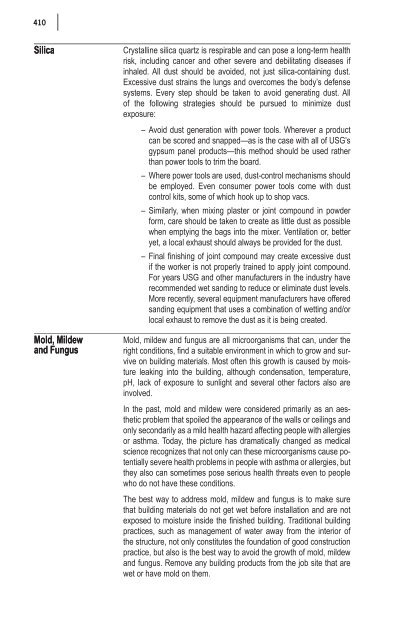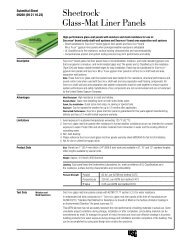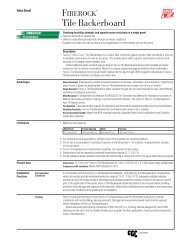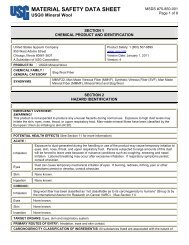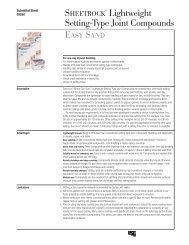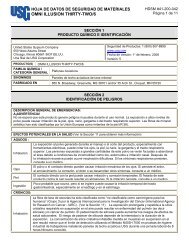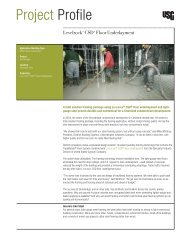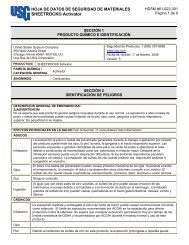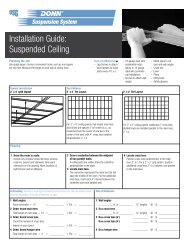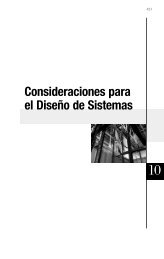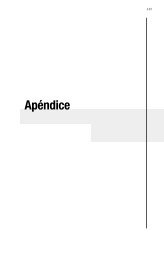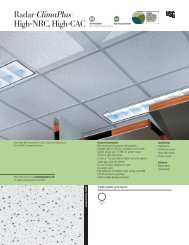13 Safety Considerations & Material Handling - USG Corporation
13 Safety Considerations & Material Handling - USG Corporation
13 Safety Considerations & Material Handling - USG Corporation
Create successful ePaper yourself
Turn your PDF publications into a flip-book with our unique Google optimized e-Paper software.
410 |<br />
Silica<br />
Mold, Mildew<br />
and Fungus<br />
Crystalline silica quartz is respirable and can pose a long-term health<br />
risk, including cancer and other severe and debilitating diseases if<br />
inhaled. All dust should be avoided, not just silica-containing dust.<br />
Excessive dust strains the lungs and overcomes the body’s defense<br />
systems. Every step should be taken to avoid generating dust. All<br />
of the following strategies should be pursued to minimize dust<br />
exposure:<br />
– Avoid dust generation with power tools. Wherever a product<br />
can be scored and snapped—as is the case with all of <strong>USG</strong>’s<br />
gypsum panel products—this method should be used rather<br />
than power tools to trim the board.<br />
– Where power tools are used, dust-control mechanisms should<br />
be employed. Even consumer power tools come with dust<br />
control kits, some of which hook up to shop vacs.<br />
– Similarly, when mixing plaster or joint compound in powder<br />
form, care should be taken to create as little dust as possible<br />
when emptying the bags into the mixer. Ventilation or, better<br />
yet, a local exhaust should always be provided for the dust.<br />
– Final finishing of joint compound may create excessive dust<br />
if the worker is not properly trained to apply joint compound.<br />
For years <strong>USG</strong> and other manufacturers in the industry have<br />
recommended wet sanding to reduce or eliminate dust levels.<br />
More recently, several equipment manufacturers have offered<br />
sanding equipment that uses a combination of wetting and/or<br />
local exhaust to remove the dust as it is being created.<br />
Mold, mildew and fungus are all microorganisms that can, under the<br />
right conditions, find a suitable environment in which to grow and survive<br />
on building materials. Most often this growth is caused by moisture<br />
leaking into the building, although condensation, temperature,<br />
pH, lack of exposure to sunlight and several other factors also are<br />
involved.<br />
In the past, mold and mildew were considered primarily as an aesthetic<br />
problem that spoiled the appearance of the walls or ceilings and<br />
only secondarily as a mild health hazard affecting people with allergies<br />
or asthma. Today, the picture has dramatically changed as medical<br />
science recognizes that not only can these microorganisms cause potentially<br />
severe health problems in people with asthma or allergies, but<br />
they also can sometimes pose serious health threats even to people<br />
who do not have these conditions.<br />
The best way to address mold, mildew and fungus is to make sure<br />
that building materials do not get wet before installation and are not<br />
exposed to moisture inside the finished building. Traditional building<br />
practices, such as management of water away from the interior of<br />
the structure, not only constitutes the foundation of good construction<br />
practice, but also is the best way to avoid the growth of mold, mildew<br />
and fungus. Remove any building products from the job site that are<br />
wet or have mold on them.<br />
chapter<strong>13</strong>.indd 410 1/<strong>13</strong>/2009 10:36:31 AM


